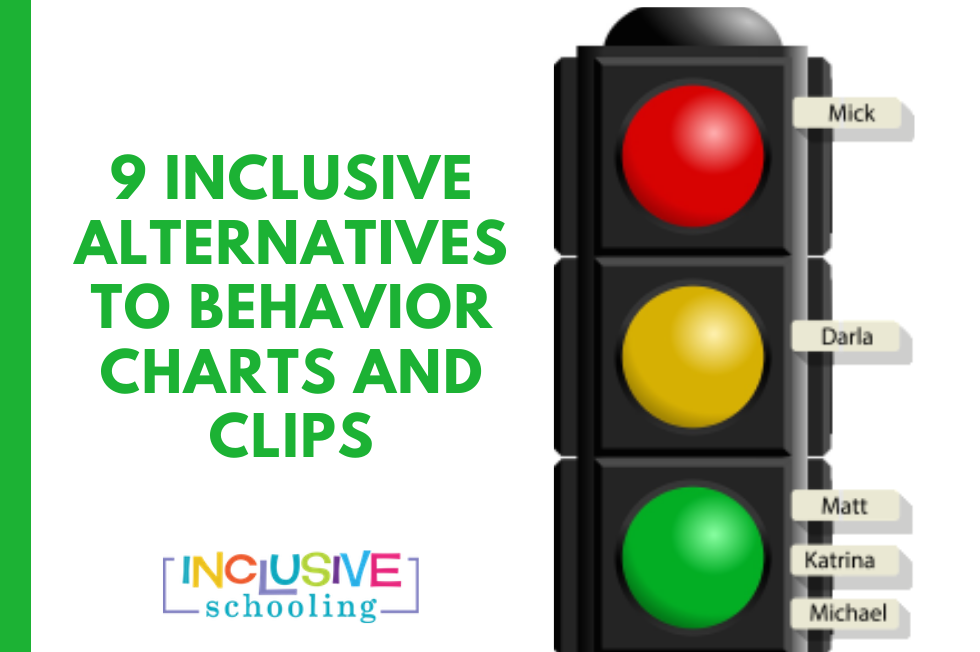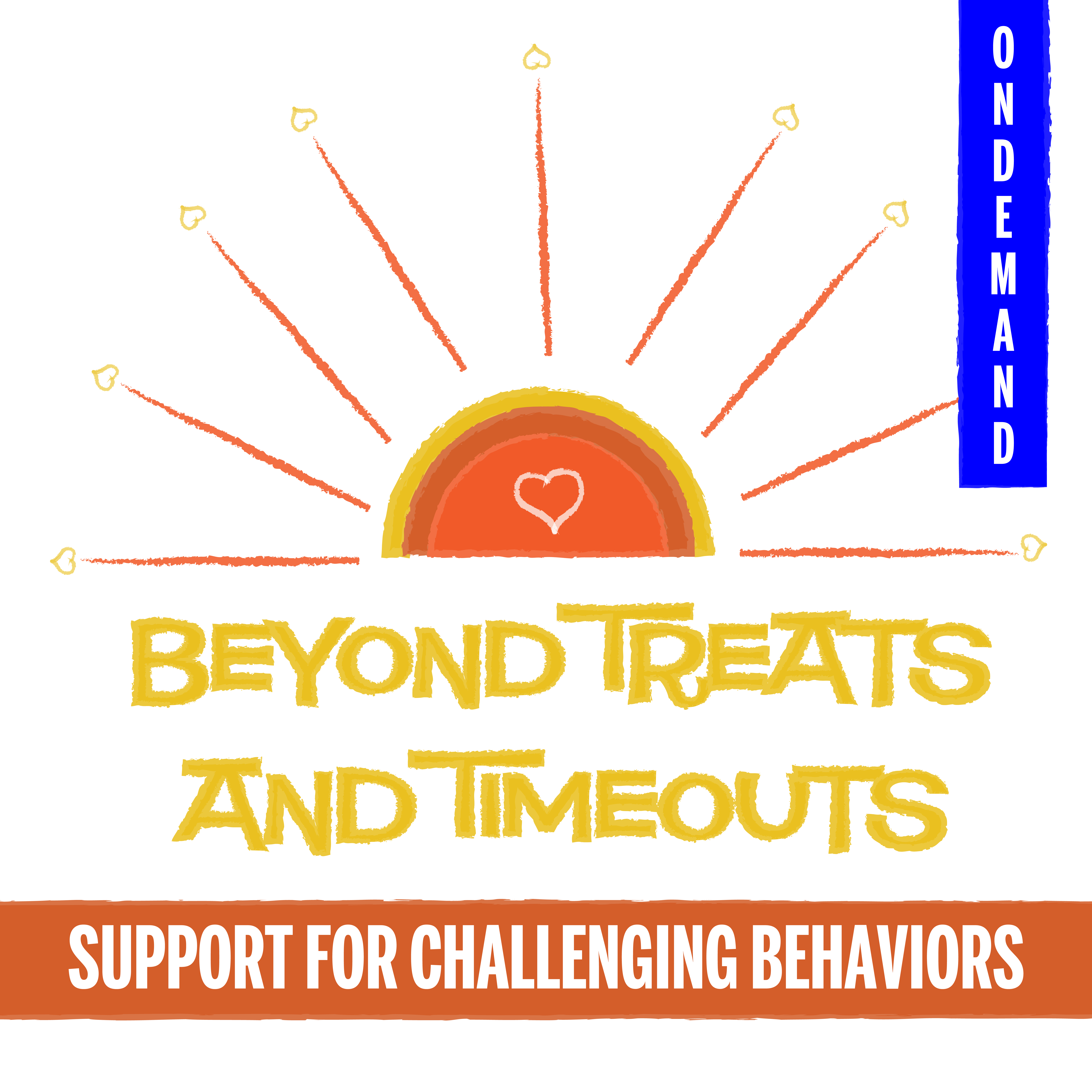You are a teacher because you are passionate about education and children. Sometimes, however, you will have students with behaviors that challenge you. Although it is seductive to look for quick fixes like behavior charts or using rewards and punishments. Such strategies provide very short-term compliance at best and in reality do significant harm to students. The ideas listed here are alternatives to public displays of student behavior which are designed to manage, control, and achieve compliance. These ideas are instead grounded in love, compassion, and an aim to ensure everyone belongs.
Idea 1: Commit to connection over the aim of compliance.
Understand that behavior charts are quick fixes that do not produce long-term solutions and are likely harming students, undermining your relationships, and getting in the way of creating inclusive communities. This is a “long game” where we consider how every teaching strategy, action, and/or practice can lead to greater connection vs. compliance. For example:
- Make time to listen as students share things they are thinking about, feeling, and/or even looking forward to.
- Use a fist to 5 structure to learn how students are feeling about life, about lessons, about anything at all.
- Ask open ended questions that give insight into their “inner world” of ideas, feelings, and dreams.
- Honor their diverse ideas, histories, and preferences.
Idea 2: Help students feel safe, seen, soothed, and secure.
When educators help create the following conditions, students are likely to develop secure attachments and be available to learn.
- Students feel safe when no internal alarms are going off. Educators help students feel safe by offering choices and understanding what the emotions are communicating.
- Students feel seen when they feel others care about their ideas, thoughts, and feelings. Educators help students feel seen by noticing and meeting their unmet needs.
- Students feel soothed when their system is NOT overpowered by emotions. Educators help students feel soothed by recognizing and reducing stressors that cause students to become hyper and/or hypoarroused.
- Students feel secure when they experience an internalized sense of well-being. Educators help students feel secure by being a safe place to go when big emotions surface and by helping students have the confidence to connect with others in positive relationships, be willing and able to try things, and to navigate uncertainty.
Idea 3: Change your lens – change your language.
Our goal is to approach our students with greater compassion and grace. This means we sometimes need to change our lens and change our language in order to move from problems to possibilities. Especially with the students who challenge us the most! Here are several examples of how to shift your lens and language.
| From | To |
|
“Misbehavior” This student wants This student is choosing to They need a consequence They need a reward They are just seeking attention Too social Too hyper Resistant Sticker charts Detention or time-outs Added rewards and punishment” Working ON students |
“Stress behavior” This student needs This student’s body is responding to They need support They need a connection They need attention Loves and needs connection Requires movement Careful when making decisions Private conversations Collaborative problem-solving Student Success Plans Working WITH students |
A Different Approach
This is a four-part on demand series for PreK-12th grade special and general education teachers, related service professionals, paraprofessionals, educational leaders, coaches, and inclusion facilitators ready for a different approach to behaviors that are challenging.
Our on demand sessions are available forever and are co-taught by Dr. Julie Causton, Dr. Kristie Pretti-Frontczak, and Dr. Kate MacLeod. Each session provides practical strategies for shifting from a “behavior management” mindset (that punishes students for “bad” behavior or rewards students for “good” or “compliant” behavior) to an approach that supports all students—with kindness, creativity, acceptance, and love.
Idea 4: Set your whole class up for success.
Use any of these proactive practices to prepare you and your students to be successful as you learn and grow together.
- Create class agreements
- Build community purposefully
- Teach (and re-teach) rules and routines clearly and consistently
- Allow for breaks and choices all day long
- Set up opportunities for students to have ownership of learning
- Create opportunities to talk about feelings
- Set up collaborative problem-solving strategies to find solutions
- Foster friendships and a sense of belonging
- Make learning fun and enjoyable
- Create habits of reflection
Idea 5: Use positive and specific feedback.
Teaching students when they are on the right track can be helpful for reaching learning and developmental outcomes. And how to provide feedback matters. When we focus on strengths and what is working, when we recognize and recognize students’ efforts, and when we affirm student success…we help the right neurons fire and wire together. Here are a few examples of ways to give positive and specific feedback:
- “You shared your crayons.”
- “I noticed you got all of your math problems finished and helped others with the extra time.”
- “Wow this team is cooperating and getting along, which is really contributing to reaching your goal!”
- “I noticed that you made a zoo that can house everyone’s animals.”
- “You got it all done in class, you will definitely be ready for tomorrow.”
Idea 6: Respond effectively and respectfully in the moment.
When a big emotion is expressed, instead of moving a student’s clip, taking away a privilege, and/or resorting to other harmful practices such as removal from the group, allow for natural consequences and provide positive, timely, and supportive feedback. Try any of the following:
- Connect- Approach privately with the aim to connect
- Validate- Aim to see the student’s experience
- Listen- Deeply, fully, and compassionately
- Restate- Mirror back what the student said or felt
- Return- Build in support for if they struggle again
- Repair- Support them to repair the harm done to relationships and others and make things right (i.e, takes responsibility, cleans up, express remorse, make amends)
A Different Approach
This is a four-part on demand series for PreK-12th grade special and general education teachers, related service professionals, paraprofessionals, educational leaders, coaches, and inclusion facilitators ready for a different approach to behaviors that are challenging.
Our on demand sessions are available forever and are co-taught by Dr. Julie Causton, Dr. Kristie Pretti-Frontczak, and Dr. Kate MacLeod. Each session provides practical strategies for shifting from a “behavior management” mindset (that punishes students for “bad” behavior or rewards students for “good” or “compliant” behavior) to an approach that supports all students—with kindness, creativity, acceptance, and love.
Idea 7: Look for patterns and give students what they need.
Identify what the behavior is communicating so you can address the unmet need. For example:
- If the student is often seeking peer connection with their behaviors, then add more opportunities to interact and connect with peers into their day.
- If a student is often “talking out of turn”, this signifies a need to express their thoughts and ideas. Thus, we create more opportunities for conversations and sharing throughout the day.
- If the student moves around and fidgets often, this communicates a need to move their body. Ensure movement choices throughout the day rather than default to typical times, such as recess or a group brain break.
Idea 8: Examine the Classroom, Not the Student.
Instead of looking for what is wrong with the student, look at the classroom (social and physical aspects), instructional offerings, and/or systems level policies and practices. Here are a few helpful guiding questions.
- Is the content interesting? How can I make it more interesting?
- Does this student feel seen in all of their public and chosen identities? How can I be sure to honor the wholeness of this person?
- Does the student need different support? How can I provide “just right” support?
- Does the student have friends and connections? How can I facilitate more connections with peers?
- Does the student need more freedom? How can I build in more choice and freedom?
- Is the class setting fun and engaging? How can I make it more fun?
- Does the student have any ownership over her learning? How can I help the student have more ownership over their learning?
- Does the student have a valuable role in this class? What role can I offer to allow more contribution?
- What role do system level practices play in marginalizing students? What practices and policies need revised to be inclusive of students' multiple and intersecting identities
Idea 9: Help them to learn how to deal with big emotions.
Across the lifespan we are exposed to stressors that tax our ability to self-regulate and keep our prefrontal cortex in the “driver's seat”. Teaching students how to effectively process big emotions and return to homeostasis is the greatest thing educators teach. Thus the end goal in supporting students’ development and learning is to help them notice, process, and respond to big emotions in adaptive ways. And how do we teach self-regulation and processing big emotions? Just as we teach any other skill, by modeling, giving opportunities to practice, scaffolding and supporting, and providing positive and timely feedback. Here are several examples of skills educators need to help students learn.
- Adapting to changes in demands and/or priorities
- Making plans before taking action
- Moving and acting deliberatelyNotice the feeling
- Taking on and takes into account the perspective of others
- Considering alternative perspectives and outcomes
- Using language to negotiate and compromise
- Noticing and addressing their needs and the needs of others
- Asking for support (e.g., a walk, a snuggle, music, someone to listen, look at a picture of your family)
- Knowing the consequences of choices and actions
- Increasing attentional control
And of course, implementing these ideas means you will take down your behavior charts, ditch the DoJo, and stop writing student names on the board. This might also mean you’ll need to have courageous conversations with students, colleagues, families, and administrators about what to do instead. You got this!


